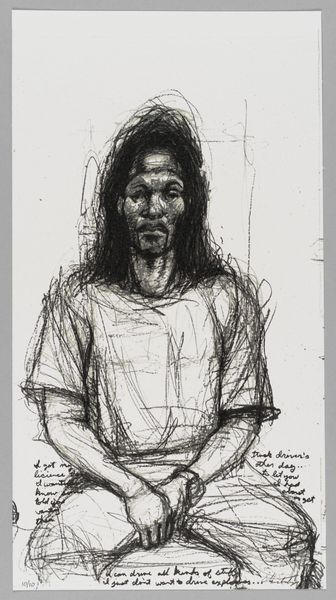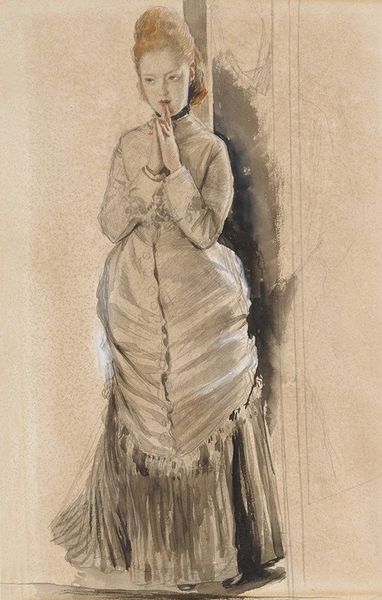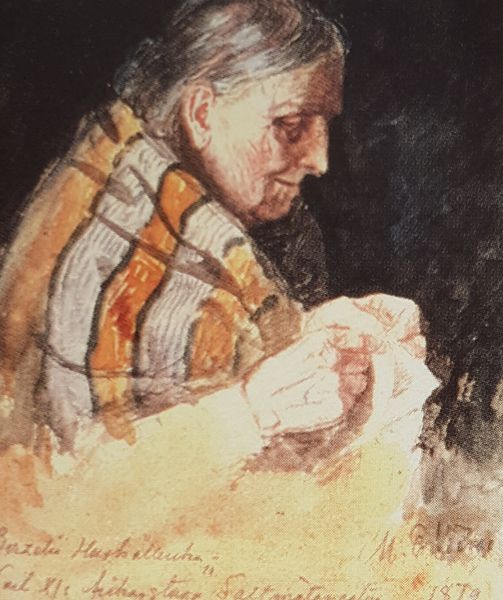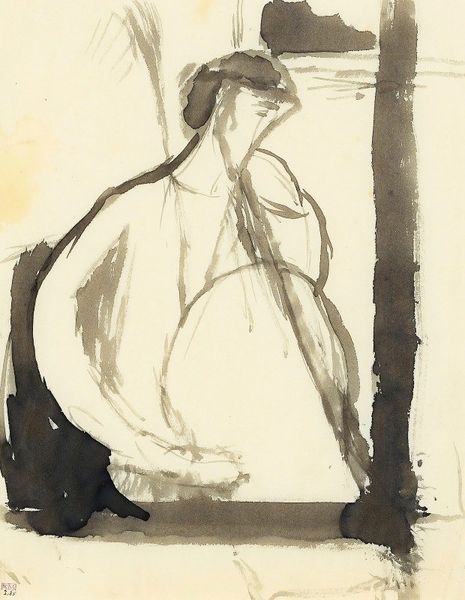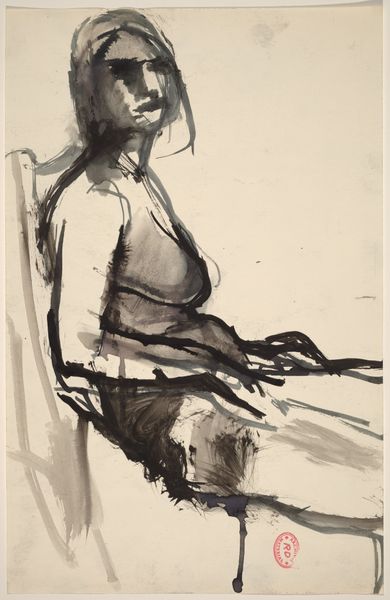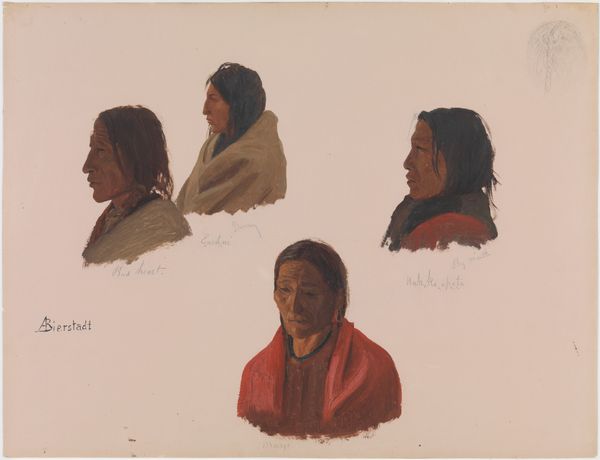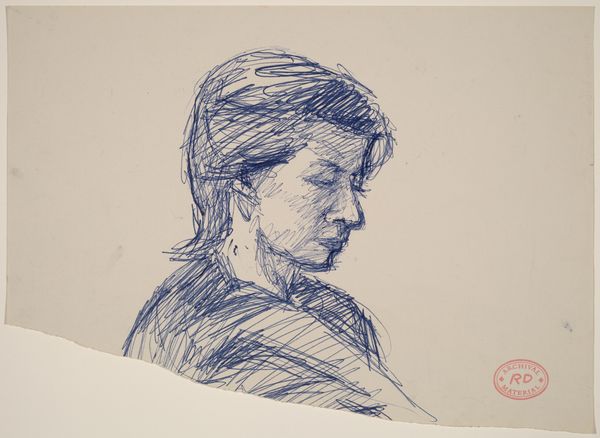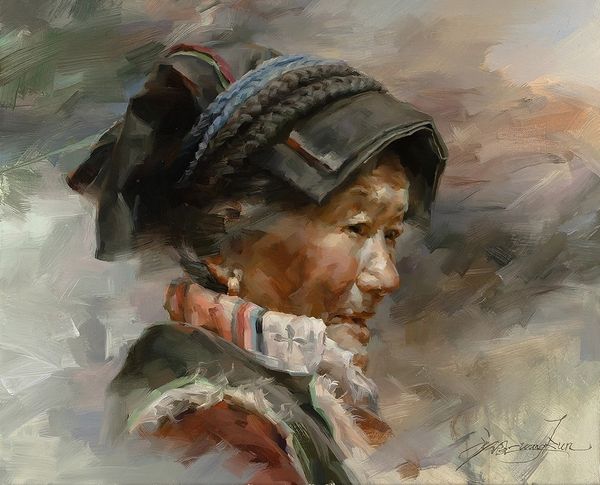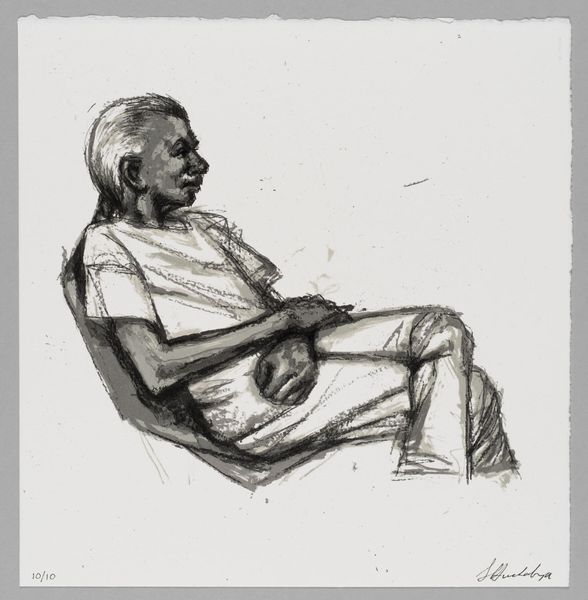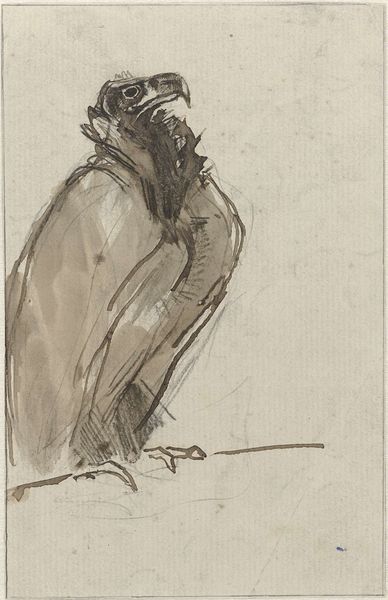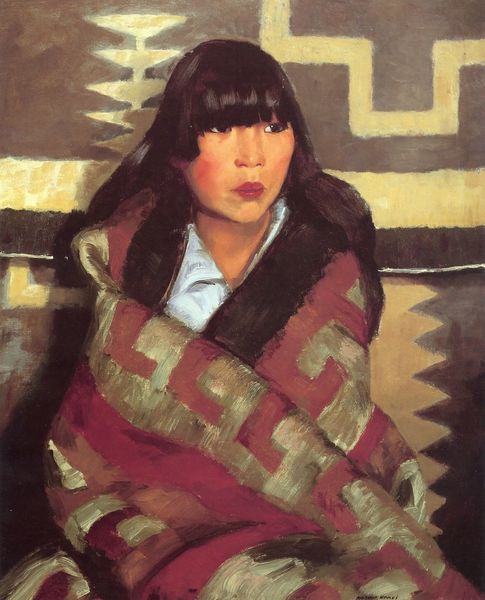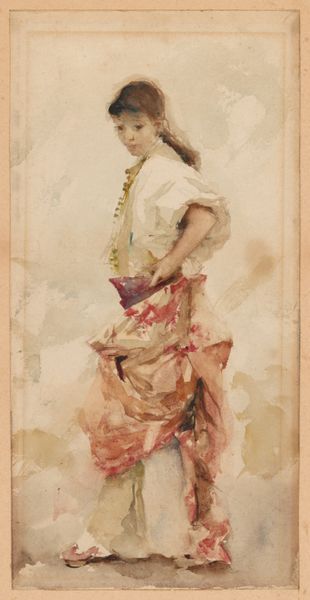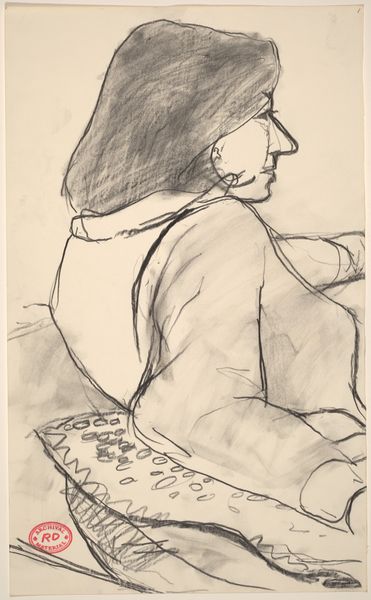
drawing, paper
#
portrait
#
drawing
#
paper
Copyright: Public domain
Curator: Here we have Karl Bodmer's 1833 watercolor drawing, "Kiasax, a Piegan Blackfeet Warrior." What are your initial impressions? Editor: It's striking how delicate the medium is, especially given the powerful subject. The way the washes of watercolor build form, particularly in the blanket, really draws me in. It seems so intentionally crafted. Curator: Bodmer's work is interesting, as he depicted people of the North American West at a time when those cultures were under immense pressure from expansion and displacement. The portraits have significant historical value as documents of encounters. Editor: Precisely! And those documents were very consciously produced. The paper choice, the pigments – did he use locally sourced materials, or were they brought from Europe? That would heavily impact how we understand its construction and reception. The material tells a story in itself, beyond simply the visual representation. Curator: His work contributed to a larger cultural dialogue happening in Europe, fostering Romantic notions of the noble savage. While it introduced European audiences to the Indigenous people and landscapes of America, these portrayals also became entwined with imperial narratives and justifications for colonization. Editor: Yes, and I wonder about Kiasax's perspective, too. What were the conditions of his portraiture? Was he compensated, and how did this image function within his community afterward, if at all? Thinking about who controls the means of representation is so crucial. Curator: It's also important to recognize the role that museums play in shaping our understanding of such historical objects. Display choices influence interpretation. Is this presented as an objective record, or is the fraught history of its creation and reception acknowledged? Editor: Museums as production sites of meaning! The visual pleasure, too, draws you in, before you start unpacking what’s actually going on: like that skillful rendering of the blanket's textures against the negative space. Beautiful, certainly, but made, distributed, and consumed in a very complex system. Curator: Absolutely. It urges us to be critically aware, recognizing its layered context and challenging the power dynamics embedded within these representations. Editor: Well, I’ll never look at a historical portrait the same way again. Every brushstroke holds so much potential.
Comments
No comments
Be the first to comment and join the conversation on the ultimate creative platform.
